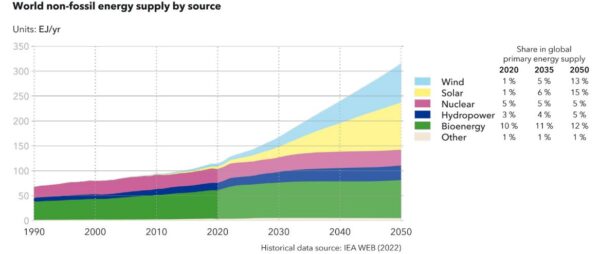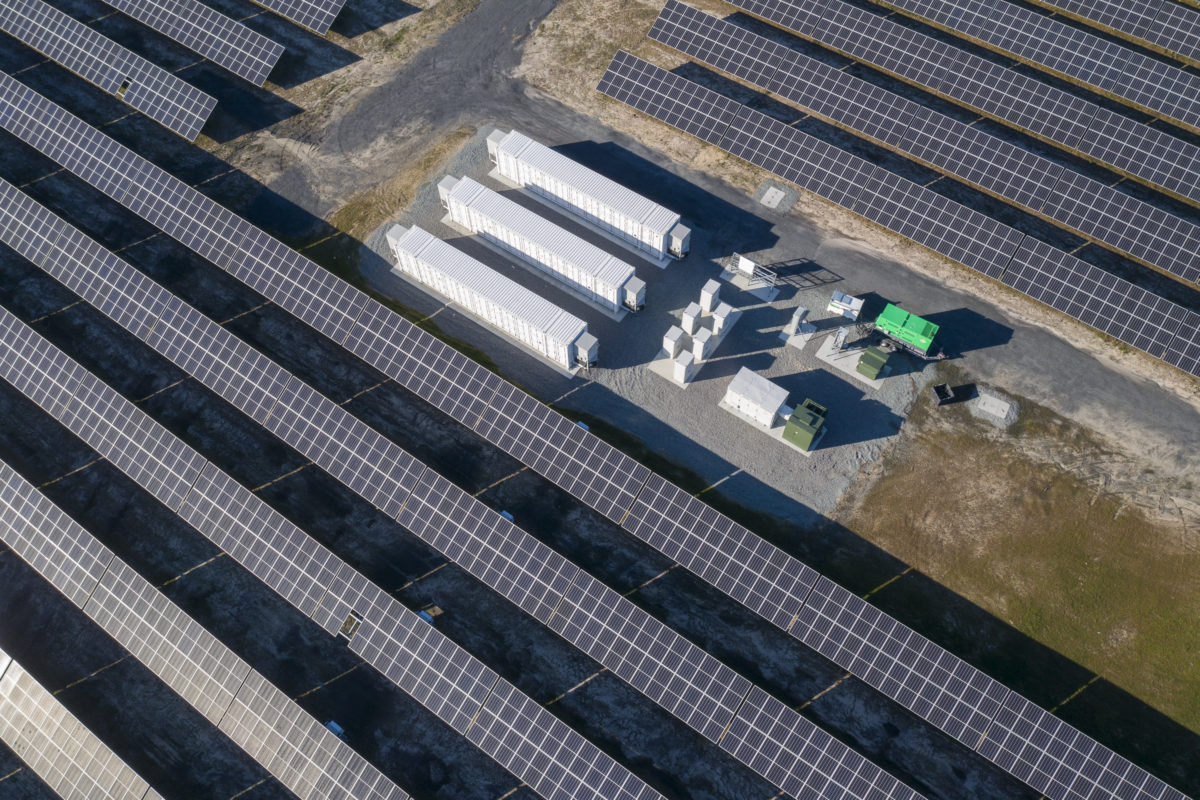Global risk management firm DNV offered its annual outlook on the global energy transition. Solar was placed in the spotlight as the leader in renewable energy supply.
“In 2050, solar PV will be in unassailable position as the cheapest source of new electricity globally,” said DNV.
As the world transitions toward carbon emissions-free electricity generation, DNV expects the share in generation mix for coal to decrease 4% and gas to decrease 8% by mid-century. As the global fossil fuel industry becomes a metaphorical fossil itself, DNV expects the world energy mix to be 70% reliant on variable renewable sources like solar and wind power. Fossil fuels will represent just over 10% of the energy mix by that time.
Along this path, solar capacity increases 22-fold in DNV’s energy transition vision. The firm said it views variable renewables as the cheapest and quickest route to both decarbonization and energy security.

Costs are expected to improve by mid-decade. The global weighted average levelized cost of energy (LCOE) for solar is currently about $75 () per MWh for solar and $180 per MWh for solar-plus-storage. DNV expects solar LCOE to drop to $45 per MWh by mid-century, with some individual project costs well under $30 per MWh.
“The main driver for this reduction in LCOE is the reduction of unit investments costs, which are around USD 900 ($1,345) A per kW as a global average now. This will fall significantly with every doubling of solar PV installation globally, reaching USD 650 ($970) per kW in 2050,” said the report.
Currently, the levelized cost of solar-plus-storage is currently more than double that of standalone solar. A continuous decline in battery prices will narrow this gap to around 50% by mid-century, said DNV.
Despite its higher costs, solar-plus-storage has an advantage in capture price. Plants with storage can charge their batteries when sunlight is plentiful during the day and sell the stored electricity when the price is high. DNV said that by 2038, the capture price advantage of solar and storage co-located projects will surpass the cost disadvantage, making these projects even more attractive.
“PV and storage systems are designed as a ‘package’ that can produce energy on demand, just like hydropower, nuclear, or combustion power plants,” said DNV.
In 10 years, DNV said roughly 20% of solar projects will be built with dedicated storage, and by mid-century such projects will reach about 50%.
DNV highlighted the impressive growth ramp of solar globally, which was 1 GW per year in 2004, 10 GW in 2010, and 100 GW in 2019. Despite global disruptions in supply chains due to COVID-19 and the Russian invasion of Ukraine, 150 GW was added worldwide in 2021. DNV expects global annual installations to continue to rise, reaching 550 GW per year.
“By mid-century, total installed capacity will be 9.5 TW for solar PV and 5 TW for solar and storage. The resulting 14.5 TW of solar capacity is 24 times greater than in 2020,” said DNV. “While solar will have a share of 54% of installed capacity in mid-century, it will account for 30% of global on-grid electricity generation.”
DNV’s full energy transition outlook can be found here.
This content is protected by copyright and may not be reused. If you want to cooperate with us and would like to reuse some of our content, please contact: editors@pv-magazine.com.









1 comment
By submitting this form you agree to pv magazine using your data for the purposes of publishing your comment.
Your personal data will only be disclosed or otherwise transmitted to third parties for the purposes of spam filtering or if this is necessary for technical maintenance of the website. Any other transfer to third parties will not take place unless this is justified on the basis of applicable data protection regulations or if pv magazine is legally obliged to do so.
You may revoke this consent at any time with effect for the future, in which case your personal data will be deleted immediately. Otherwise, your data will be deleted if pv magazine has processed your request or the purpose of data storage is fulfilled.
Further information on data privacy can be found in our Data Protection Policy.